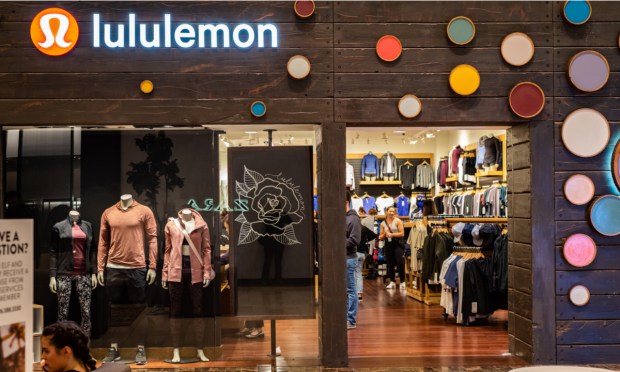Lululemon’s Accessories Spark Cult-Like Following With 44% Surge in Sales

If it wasn’t the Lululemon Aligns for women or ABC pants for men that kept consumers come back, it’s the accessories.
“Our entire bag assortment is performing well, crossbody style backpacks and small pouches are helping drive these results,” said Calvin McDonald, CEO of Lululemon Athletica, during the company’s second quarter earnings call on Thursday (Aug 31).
McDonald reported a 44% surge in accessory sales during the second quarter. Particularly noteworthy was the double-digit growth of the Everywhere Belt Bag, building upon the previous year’s performance. The accessories team expanded the range of the Everywhere Belt Bag across diverse sizes, color options, prints, and patterns, and met with favorable customer reception.
As a result, the projected fiscal year revenue has been raised to a range of $9.51 billion to $9.57 billion, surpassing Lululemon’s prior estimate of $9.44 billion to $9.51 billion. North American revenue grew 11%, and increased 52% internationally. These numbers are linked to the company’s efforts to expand, notably in the Asia-Pacific region. The rise in accessories revenue from the previous year is attributed to the appeal of its bag styles.
The quarterly results are in line with Lululemon’s “Power of Three x2” growth plan which seeks to achieve a twofold increase in its business, moving from the 2021 net revenue of $6.25 billion to $12.5 billion by 2026.
Regarding the Asia-Pacific region, McDonald emphasized its status as a quickly expanding market for the company, as during the third quarter, Lululemon launched nine company-operated stores in Asia-Pacific and one in Europe.
McDonald said the resurgence of the travel and tourism industry in AIPAC was playing a role in this growth. He also underscored the successful launch of Lululemon’s first-ever store in Thailand, which opened in Bangkok in July.
Lululemon’s explorations into new product categories are not universally yielding outstanding outcomes. But McDonald said that the company is making consistent advancements in footwear and is preparing for the introduction of men’s footwear in the coming year.
Lululemon’s Cult Following
While Lululemon’s footwear might not be yielding the results its looking for, its connected fitness venture also faced challenges, evident from the workforce downsizing at its fitness studios in July.
However, its ability to create high-quality activewear has created a fervent fan base that transcends mere brand loyalty. The brand’s reputation for creating activewear that combines comfort, functionality and durability has connected with consumers, establishing a foundation of trust with its customers.
At the heart of Lululemon’s cult following lies a commitment to quality and innovation. In fact, during the call on Thursday, an analyst from Barclays said, “Every time you get on a call, there’s like another list of five new things that we didn’t know about. So, I’m just wondering, have you accelerated innovation turnover time, the pipeline or the investment?”
In 2009, New York magazine acknowledged the brand’s achievement in cultivating a devoted community. Back then, it was responsible for an annual profit of $350 million and served as an inspiration for blogs like “Lululemon Addict” and hundreds of Facebook groups, “many devoted to celebrating Lululemon’s ability to make butts look great.”
Lululemon by the Numbers
In the second quarter of 2023, compared to the same period in 2022, net revenue increased 18% to $2.2 billion, or 20% on a constant dollar basis. The growth was notable in both North America, where net revenue increased by 11%, and internationally, with a 52% increase.
Positive growth trends were evident across key metrics, with total comparable sales increasing by 11%, or 13% adjusted for currency effects. Comparable store sales rose 7%, or 9% adjusted for currency.
The company’s direct-to-consumer (D2C) net revenue grew 15%, or 17% on a constant dollar basis. This shifted the distribution mix, with D2C net revenue accounting for 40% of total net revenue, down from 42% in the second quarter of 2022.
Gross profit increased by 23% to $1.3 billion, leading to a 230 basis points rise in the gross margin, to 58.8%.

